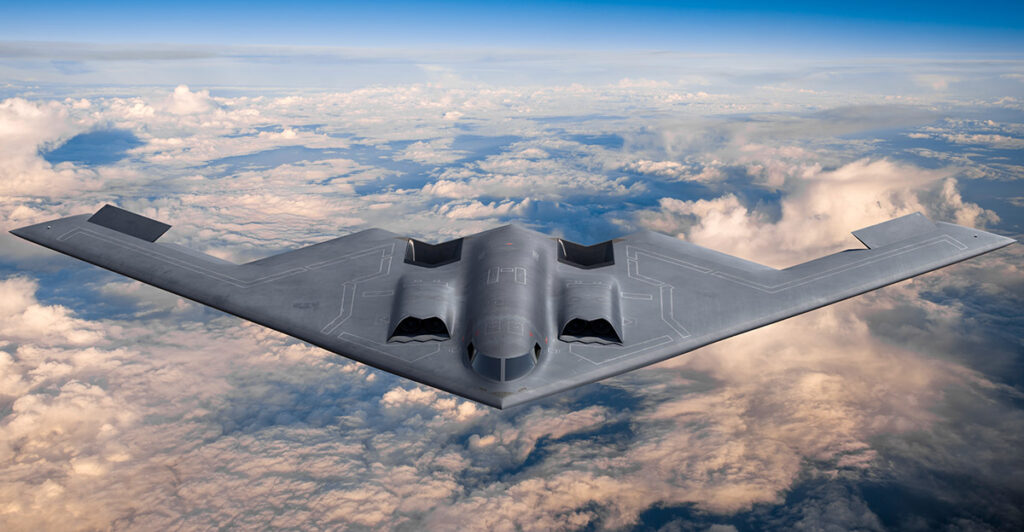In the realm of modern warfare, air superiority is paramount, and the United States has consistently invested in cutting-edge aviation to maintain its dominance. As of June 2025, the U.S. arsenal boasts some of the most sophisticated and capable American fighter jets in the world, developed by industry giants renowned for their aerospace prowess. These aircraft are not merely flying machines; they are complex systems integrating advanced stealth, sensor fusion, and networked capabilities designed to operate effectively in contested environments.
From providing air cover to ground troops to executing precision strikes, American fighter jets are the cornerstone of the nation’s defense strategy. Let’s explore the key players in this high-stakes game of aerospace engineering.
Key Developers of American Fighter Jets
The innovation behind these aerial behemoths primarily stems from a few major American defense contractors:
- Lockheed Martin: A global aerospace, defense, and security giant, Lockheed Martin is a dominant force in fighter jet development, responsible for some of the most advanced stealth aircraft.
- Boeing: While also a major commercial aircraft manufacturer, Boeing has a long history of producing formidable military aircraft, including multirole fighters and bombers.
- Northrop Grumman: Known for its stealth technology and advanced systems, Northrop Grumman plays a crucial role in developing cutting-edge aviation platforms and components.
These companies, alongside engine manufacturers like Pratt & Whitney and General Electric, continually push the boundaries of what’s possible in military aviation American fighter jets.

Top American Fighter Jets: Inventory, Features, and Pricing
The U.S. military operates a mix of fifth-generation stealth fighters and highly modernized fourth-generation variants, each serving distinct roles. Here’s a breakdown of the most prominent American fighter jets in service:
1. Lockheed Martin F-35 Lightning II (Fifth-Generation Multi-Role Stealth Fighter)
- Role: Stealth multirole combat aircraft designed for air superiority, ground attack, reconnaissance, and electronic warfare. It’s the backbone of future air fleets for the Air Force, Marine Corps, and Navy and American fighter jets.
- Key Features:
- Stealth Technology: Low observability, making it difficult for radar to detect.
- Sensor Fusion: Integrates data from multiple on-board sensors to provide pilots with unparalleled situational awareness.
- Network-Centric Warfare: Shares real-time tactical data with other air, ground, and naval forces.
- Variants: F-35A (Conventional Take-Off and Landing for USAF), F-35B (Short Take-Off/Vertical Landing for USMC), F-35C (Carrier-based for USN).
- US Inventory (Approx. June 2025): The U.S. continues to procure F-35s, with well over 700+ delivered across all variants to the US forces. The DoD plans to acquire 2,470 aircraft over its lifespan.
- Approximate Unit Cost (Flyaway):
- F-35A: ~$82.5 million
- F-35B: ~$109 million
- F-35C: ~$102 million
- (Note: These are flyaway costs and do not include sustainment, R&D, or full lifecycle costs which can push total program costs into trillions.)
2. Lockheed Martin F-22 Raptor (Fifth-Generation Air Superiority Stealth Fighter)
- Role: Primarily designed for air superiority, but also has ground attack, electronic warfare, and signals intelligence capabilities. Considered the world’s most dominant air-to-air fighter of American fighter jets.
- Key Features:
- Extreme Stealth: Superior radar-evading capabilities.
- Supercruise: Sustained supersonic flight without using afterburners, increasing range and efficiency.
- Supermaneuverability: Vectoring thrust nozzles allow for incredible agility.
- Sensor Fusion: Unmatched battlefield awareness through integrated avionics.
- US Inventory (Approx. June 2025): Approximately 183 operational aircraft (out of 187 built). Production was terminated early due to high costs and shifting threat perceptions.
- Approximate Unit Cost: ~$185.7 million (procurement cost, 2010 dollars), which is around $252.2 million in 2025 dollars due to inflation, making it one of the most expensive American fighter jets ever built.
3. Boeing F-15EX Eagle II (4.5 Generation Air Superiority/Multirole Fighter)
- Role: An advanced variant of the highly successful F-15 Eagle, designed for air superiority, interdiction, and deep strike missions, complementing the F-35 and American fighter jets.
- Key Features:
- Massive Payload: Can carry up to 22 air-to-air missiles or a large array of air-to-ground munitions.
- Advanced Avionics: Features an AESA (Active Electronically Scanned Array) radar, new electronic warfare suite (EPAWSS), and digital fly-by-wire controls.
- High Speed & Range: Retains the F-15’s impressive speed (Mach 2.5) and range.
- Lower Operating Costs: Cheaper to fly per hour than the F-35, making it suitable for certain missions.
- US Inventory (Approx. June 2025): The USAF plans to acquire 104 F-15EXs. Deliveries began in 2021, and about 14 were delivered in 2024. The fleet will grow steadily over the coming years.
- Approximate Unit Cost (Flyaway): ~$90-97 million (varies by lot), potentially up to $117 million fully combat-ready with all systems.
4. Lockheed Martin F-16 Fighting Falcon (Fourth-Generation Multirole Fighter)
- Role: A versatile, highly maneuverable multirole fighter used extensively by the USAF, Air National Guard, and Air Force Reserve for both air-to-air combat and air-to-surface attack and American fighter jets.
- Key Features:
- High Agility: Known for its excellent maneuverability and 9-g capability.
- Cost-Effective: Designed to be relatively inexpensive to build and maintain compared to its predecessors.
- Block Upgrades: Continually modernized with advanced avionics, weapons, and radar systems (e.g., Block 70/72 “Viper” variants).
- US Inventory (Approx. June 2025): Over 800 active F-16s across different variants (as of 2023 data, with continuous upgrades and some divestments). It remains the most numerous fighter in the USAF fleet.
- Approximate Unit Cost (New Production Block 70/72): ~$60 million (flyaway cost for modern variants, primarily for export). Original F-16s were much cheaper.
5. Boeing F/A-18 Super Hornet (Fourth-Generation Carrier-Based Multirole Fighter)
- Role: The primary multirole fighter for the U.S. Navy and Marine Corps, capable of operating from aircraft carriers. It performs air superiority, strike, reconnaissance, and tanking missions.
- Key Features:
- Carrier Capability: Robust design for catapult launches and arrested landings.
- Multirole Versatility: Excellent at both air-to-air and air-to-ground missions.
- Advanced Avionics: Equipped with AESA radar and integrated electronic warfare systems.
- Two-Seat Variant (F/A-18F): Allows for a weapons system officer (WSO) to manage complex missions.
- US Inventory (Approx. June 2025): The US Navy operates over 500 F/A-18E/F Super Hornets. It is expected to remain a predominant aircraft in the carrier air wing into the 2040s.
- Approximate Unit Cost (Block III Super Hornet): ~$70 million (flyaway cost).
Common Technological Underpinnings
Beyond individual aircraft, American fighter jets share common technological foundations that ensure their collective superiority:
- Stealth Technology: Minimizing radar cross-section is a hallmark, crucial for penetrating contested airspace.
- Sensor Fusion: The ability to combine data from various on-board and off-board sensors into a single, coherent picture for the pilot, enhancing situational awareness.
- Network-Centric Warfare: Connecting aircraft with ground stations, satellites, and other assets to share data and coordinate operations in real-time.
- Advanced Avionics: Glass cockpits, Helmet-Mounted Displays (HMDs), and sophisticated flight control systems.
- Powerful Engines: High-thrust, fuel-efficient turbofan engines allowing for supersonic speeds and long ranges.
The Future: Next Generation Air Dominance (NGAD)
While the current fleet of American fighter jets is formidable, the U.S. military is already looking to the future. The Next Generation Air Dominance (NGAD) program aims to develop a “family of systems” that will replace the F-22 Raptor and F-15E Strike Eagle. This classified program focuses on a sixth-generation fighter and unmanned collaborative combat aircraft (CCA) to ensure air superiority in the 2040s and beyond, emphasizing greater range, stealth, and adaptability. Boeing was recently selected to develop the NGAD fighter platform in March 2025.
Also Read : The Engine of Trust: Unpacking the Top 5 Blockchain Consensus Mechanisms
Conclusion
The array of American fighter jets in service reflects a multi-layered approach to airpower – combining the cutting edge of stealth with highly modernized and versatile workhorses. From the unparalleled air superiority of the F-22 to the multi-mission prowess of the F-35 and the enduring adaptability of the F-15EX, F-16, and F/A-18, these aircraft stand as a testament to the continuous innovation and strategic might of the United States. As threats evolve, so too will these incredible machines, ensuring America’s continued dominance in the skies.
Looking to grow your brand online? Our expert digital marketing services help you boost visibility, generate quality leads, and drive real results. From SEO and social media to performance marketing, we’ve got you covered check out our services at KnightPixels and let’s elevate your digital presence! Digital Detox Guide Digital Detox Guide Digital Detox Guide Digital Detox Guide Digital Detox Guide








